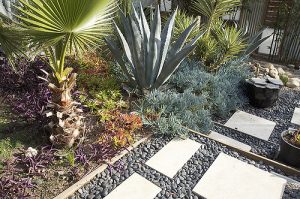Landscaping With No Water!
Landscaping for Minimal Water Use
If your new home requires landscaping, or you want to refresh your landscaping before putting your house on the market, you want plantings that are as environmentally friendly as possible. Xeriscaping is the art of landscaping with minimal water use. That means native plants that don’t require the huge amounts of water often necessary to allow non-native species to thrive. Not only are native plants attractive and often less thirsty than “foreign” plantings, but they usually do not need as much upkeep.
Know Your Zone
Oahu consists of nine climate zones, and its important to know your zone and its soil types and water resources before choosing landscaping plants. Zone 1 through 3 are dry zones, with average rainfall of 47 inches or less. These zones are located around the coastal perimeters of the island. Zones 4 through 6 are mesic, which refers to areas with a balanced moisture supply. These zones receive between 47 and 98 inches of annual rainfall, and are more prominent on the eastern side of the island, although they do exist elsewhere. Zones 7 through 9 are wet zones, with annual rainfall above 98 inches. These zones are not found on the western side of Oahu, but are concentrated in the eastern, northern and southern sections in rainforests.
Many plants can do well across various zones, but if you’re landscaping with minimal water needs in mind, paying attention to the water needs of plants is critical. For example, if you live in a dry zone, you don’t want to install native plants with substantial water requirements.
Native Shrubs
Some of the most suitable indigenous shrubs for landscaping include:
- Kokio ke‘oke‘o, or Hibiscus arnottianus – native to mesic and wet zones, this shrub – which may grow to tree height – sports dark green leaves and fragrant white flowers. It is salt tolerant.
- ‘Ilima, or Sida fallax – suitable for dry and mesic zones, the orange flowers of this shrub are used in lei creation. It is salt, wind and drought tolerant.
- ‘Ūlei or Osteomeles anthyllidifolia – also suitable for dry and mesic zones, this shrub features white bloom and glossy green leaves. It is wind and drought tolerant.
Native Trees
When planting native landscape trees, take into consideration the tree’s eventual height. Here’s a sampling of small, medium and large indigenous tree choices:
- Naio or Myoporum sandwicense – at maturity, this tree remains relatively small. Suitable for all zones, the naio boasts small pink blooms and glossy or hairy leaves. It is salt, wind and drought tolerant.
- Lama or Diospyros sandwicensis – the lama may grow to medium height, and is suitable for all zones. It produces an edible orange fruit and is wind and drought tolerant.
- Koa or Acacia koa – if you want a large tree, the koa fills the bill. Suitable for all zones, the koa produces cream-colored flowers. It is wind and drought tolerant once it is established, but keep a careful eye on it if in a dry area when it is newly planted.
Contact Us
If you’re looking to buy or sell a home or find a rental or investment property, you need a knowledgeable, experienced realtor familiar with all aspects of the Hawaiian real estate market. Contact Island Realty Group LLC at 808-689-7407 or IslandRealtyGroup@irghi.com.


